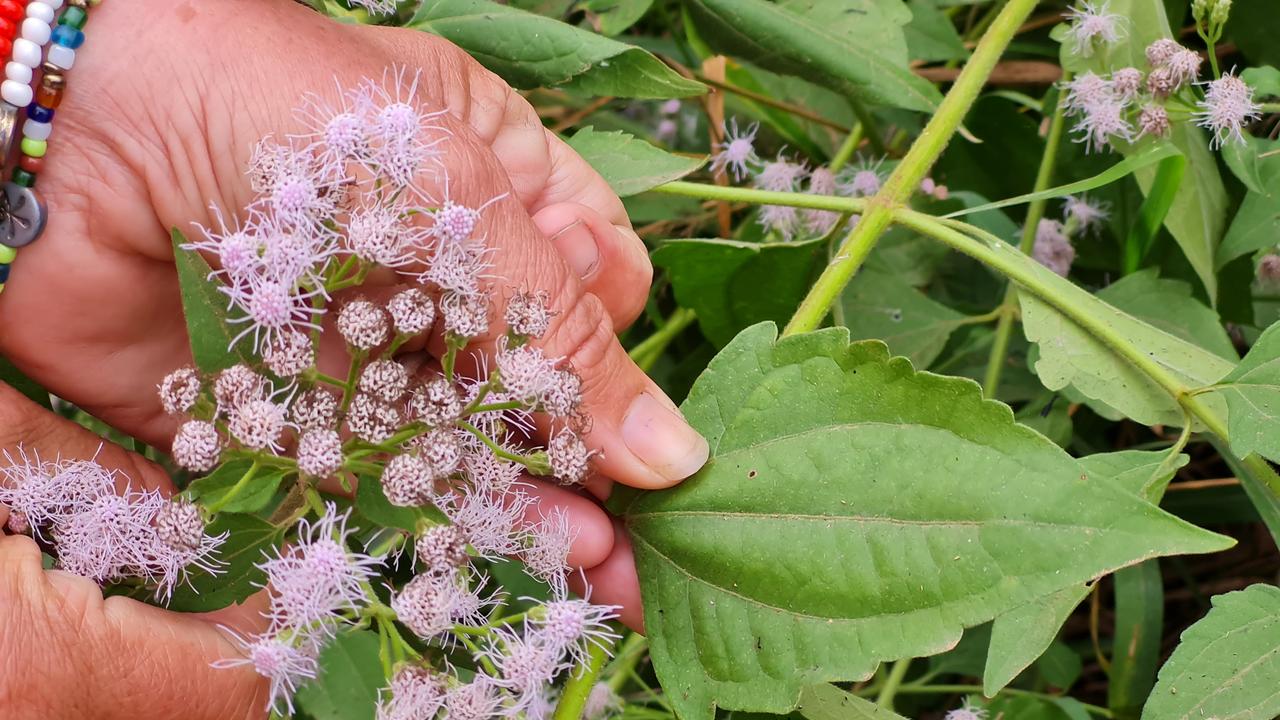- このトピックは空です。
- 投稿者投稿
- 3月 26, 2025 11:15 am #607285
Siam weed (Chromolaena odorata), often vilified as an aggressive invasive species, presents a paradoxical opportunity in the realm of pharmaceutical research.
While its ecological impacts are undeniable, emerging scientific investigations are shedding light on its rich phytochemical profile, suggesting that exploring the potential of Siam weed as a sustainable source of bioactive compounds for pharmaceutical applications could offer novel therapeutic avenues.
This article delves into the promising research surrounding the medicinal properties of Siam weed and its potential as a sustainable resource.
1. Diverse Range Of Bioactive Phytochemicals
Despite its weedy reputation, Siam weed is a repository of diverse bioactive compounds with potential medicinal value. Phytochemical analysis has revealed the presence of various classes of secondary metabolites in different parts of the plant, including flavonoids, terpenoids, alkaloids, phenolic acids, and essential oils.
These compounds are known to possess a wide range of pharmacological activities. For instance, flavonoids are recognized for their antioxidant and anti-inflammatory properties, while terpenoids have demonstrated antimicrobial and anticancer effects. The specific composition and concentration of these phytochemicals can vary depending on the geographical location of the plant, the season, and the extraction methods employed, highlighting the need for thorough characterization.
2. Documented Pharmacological Activities
Traditional medicinal practices in various regions where Siam weed is prevalent have long utilized the plant for its therapeutic properties. Modern scientific research is increasingly validating these traditional uses and uncovering new potential applications. Studies have demonstrated that extracts from Siam weed exhibit significant antimicrobial activity against a range of bacteria and fungi, including antibiotic-resistant strains.
Its anti-inflammatory properties have also been investigated, showing potential in treating inflammatory conditions. Furthermore, research has explored its analgesic, wound-healing, antimalarial, and even anticancer activities. These findings suggest that Siam weed could be a valuable source of novel drugs for treating various ailments.
3. Sustainability As A Resource
One of the compelling arguments for exploring Siam weed’s pharmaceutical potential is its abundance and invasive nature. Unlike many medicinal plants that are rare or threatened due to overharvesting, Siam weed is prolific and readily available in many parts of the world.
This widespread availability makes it a potentially sustainable and cost-effective source of bioactive compounds. Utilizing Siam weed for pharmaceutical purposes could simultaneously address the problem of its invasive spread by providing an economic incentive for its controlled harvesting and management.
This dual benefit of weed control and drug discovery makes it an attractive candidate for further research and development.
4. Challenges And Future Research Directions
Despite the promising findings, several challenges need to be addressed before Siam weed can be fully realized as a pharmaceutical resource. Further research is required to isolate and characterize the specific bioactive compounds responsible for the observed pharmacological activities. Standardized extraction and purification methods need to be developed to ensure consistent quality and efficacy of the extracts.
Toxicity studies are crucial to assess the safety of Siam weed extracts and isolated compounds for human use. Additionally, clinical trials are necessary to validate the efficacy of Siam weed-based treatments in humans. Future research should focus on overcoming these challenges and exploring the full potential of this underutilized plant.
5. Potential Applications And Economic Benefits
The successful development of pharmaceutical products from Siam weed could have significant economic and health benefits. The discovery of new antimicrobial agents from Siam weed could help combat the growing threat of antibiotic resistance. Its anti-inflammatory and analgesic properties could provide alternative treatments for chronic pain and inflammatory conditions.
Furthermore, the sustainable utilization of Siam weed could create new economic opportunities in regions where it is abundant, turning a problematic weed into a valuable resource. This could involve the development of industries focused on the cultivation (in controlled settings), harvesting, and processing of Siam weed for pharmaceutical applications.
While Siam weed is often viewed as an ecological nuisance, its potential as a sustainable source of bioactive compounds for pharmaceutical applications warrants serious consideration. The growing body of research highlighting its diverse phytochemical profile and promising pharmacological activities suggests that this invasive plant could hold the key to novel therapeutic agents.
By addressing the existing challenges and investing in further research, we can potentially transform Siam weed from a pest into a valuable resource, benefiting both human health and the environment.
Read Also: The Allelopathic Effects of Siam Weed on Native Plant Communities and Agricultural Crops
- 投稿者投稿
- このトピックに返信するにはログインが必要です。






